Our Blog - Rodez, France
Our first stop was the town of Rodez. The town dates back to the 5th century when a Celtic tribe stopped here and decided to stay. It is a decent size ... around 25,000 people and has been growing for the past several decades. We did a short walk around town to see some of the major sites.
The Hôtel de Coignac was a private mansion which dates back to the late 19th century. In 1927, the Chamber of Commerce bought this building for offices which it occupied until 1960. The 1st floor contains stained-glass windows (a little hard to see but you can see some darker blue circles in the panes of glass, which were made after World War II.

The Hôtel de Séguret is a 17th century bourgeois mansion which belonged to an important family of magistrates. The portal has some very nice "grotesque" masks with thick features that were popular in the Baroque period.


Not the best picture due to where the sun was, but Hôtel de Bonald has a spiral staircase visible from the courtyard. This 16th century building was the residence of one of the most important families.

The Hôtel de Lauro is a 17th century former residence of a canon. It was later converted several times into a school and rectory. Today, it houses a French trade guild. We really liked the little turret on the corner with lead-lined stained-glass and the large mullioned windows



The house known as Maison d’Armagnac was built in the first half of the 16th century and belonged to a wealthy merchant and banker. Gothic and Renaissance styles mingle on the facade: grotesques and corbels bear a resemblance to the Gothic style but the symmetrical layout, the old-style medallions and the dormer windows are in the Renaissance style and are reminiscent of the cathedral’s choir enclosure decoration. There are many antique medallions on the façade. In the 19th century, scholars saw them as a representation of the genealogy of the Armagnacs, the counts of Rodez since the beginning of the 14th century and that is how the building got its name.
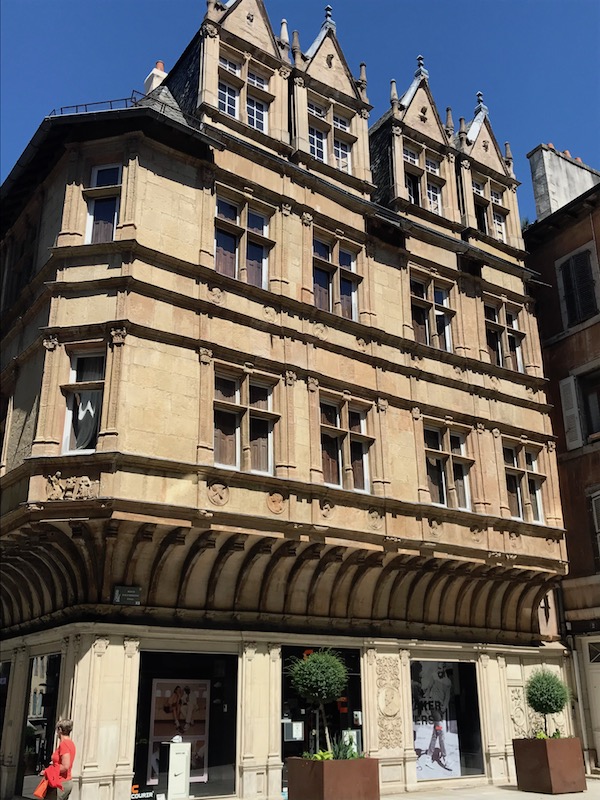

In Gallo-Roman times, the forum was the main place of public life and trade within the town. It was located in this square, with the only visible remains of it being the low wall that you see here, situated at the entrance to the underground car park.


The 17th century Chapel of the former Jesuit College (which is a middle school, not a university) is now known a the Chapelle Royale. It was originally part of a vast ensemble which has been partially destroyed. The baroque style building is flanked by four square towers with sloping roofs. The foundation stone of the chapel was laid in 1581 but the chapel was not consecrated until 1649. On its façade, there are two statues: Saint François-Xavier (a missionary) and Ignacio de Loyola (the founder of the Jesuits). Inside, there is (supposedly) a beautiful monumental altarpiece as well as painted wood galleries, but it was closed when we were there so we weren't able to see them.
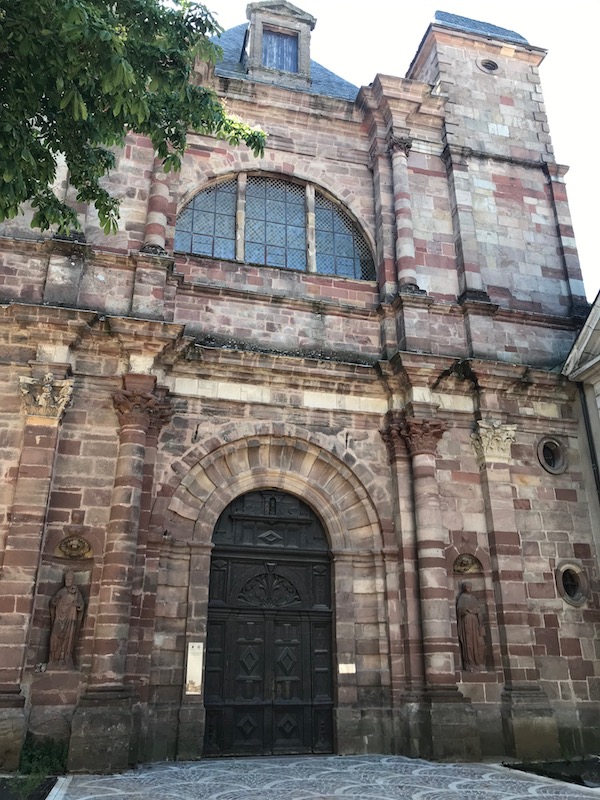

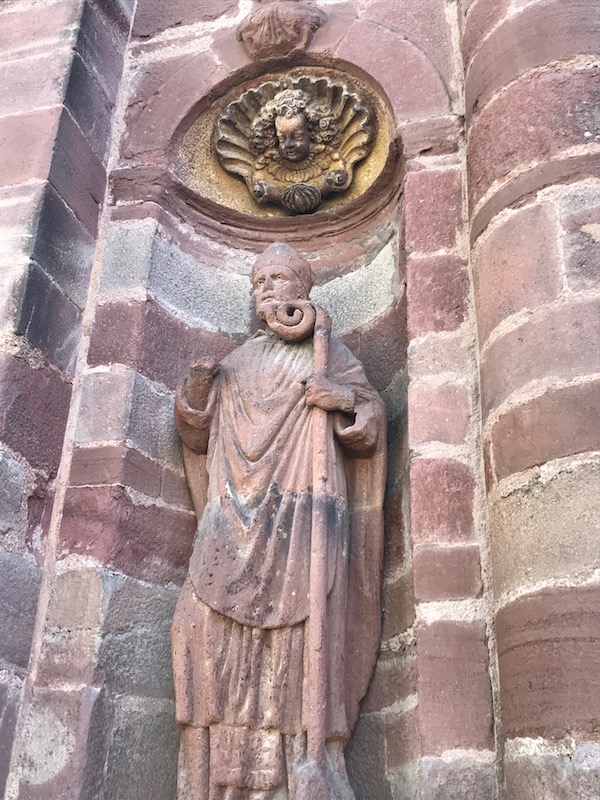
This is the Maison Canoniale. The restored entrance gate dates back to the 15th century. It still has a small window, an ancestor of our current peephole, and a knocker. In the courtyard, there is a 15th-century sandstone well that is decorated with scallops and bumblebees on the lower panels, symbols of the pilgrims on the way to Santiago de Compostela. In the Middle Ages, Rodez was on one of the many secondary pilgrimage routes.


The main site is the Cathedral. It was started in the 13th century but took about 300 years to build. It is one of southern France's largest cathedrals and is built out of local pink sandstone. The construction was slowed down by the Hundred Years War, plague epidemics and by the division of the diocese in 1317. The main facade has no entrance gate because the cathedral was joined to the town ramparts and so it looks like an impassable wall. However, the sides with the entrance doors are highly decorated. The clock tower is one of France's highest flat clock towers and is in a flamboyant Gothic style. Lucy wanted to go in but wasn't allowed (yea, we know, this isn't Italy!).
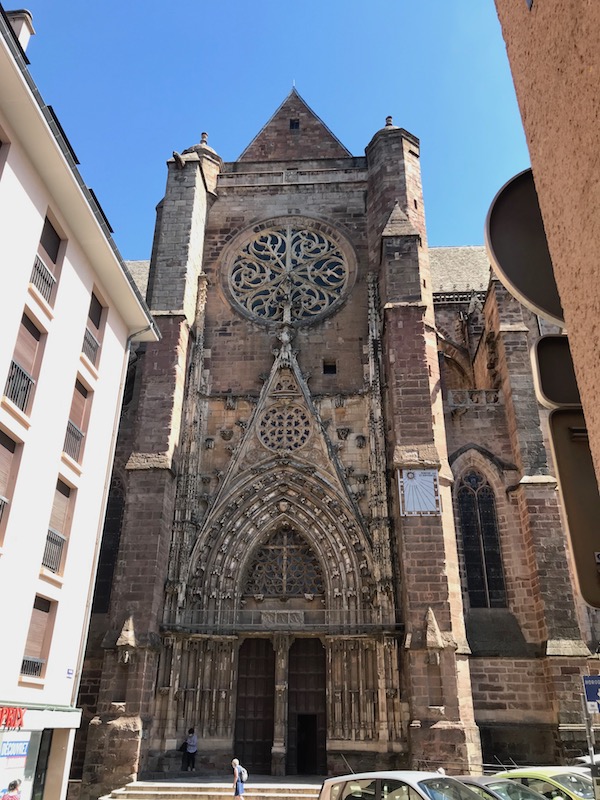


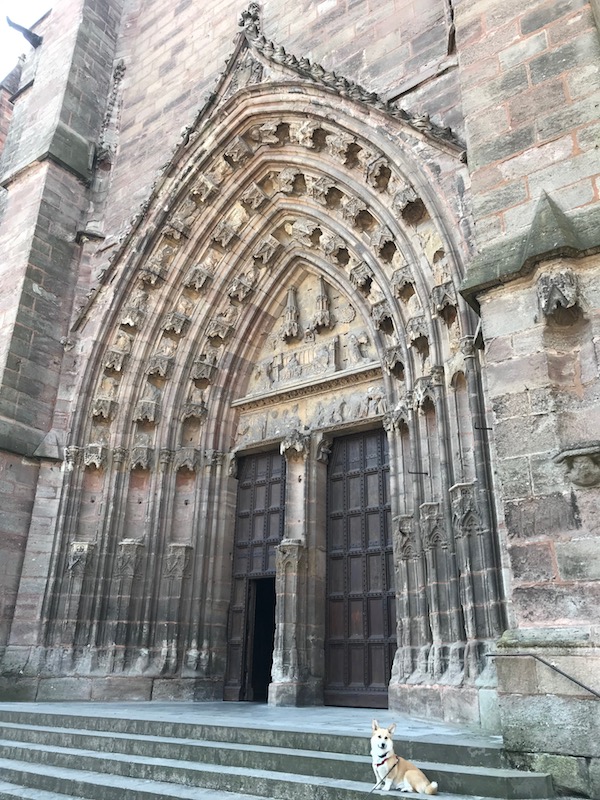
The carved wood choir stalls date from the 15th century.

The great organ is one of the famous features of the cathedral, with the wooden buffet dating back to 1628.

The cathedral is one of the few Gothic churches that retains a rood screen, placed between the choir and the nave. Most French rood screens were removed during the Renaissance, in response to a Vatican change in church doctrine to intended to make the interior of churches more open and accessible to lay parishioners. The rood screen was installed in 1478 but in the 19th century, it was moved intact to its present location in the north transept.

There are lots of lovely carvings, including this one showing the Annunciation.
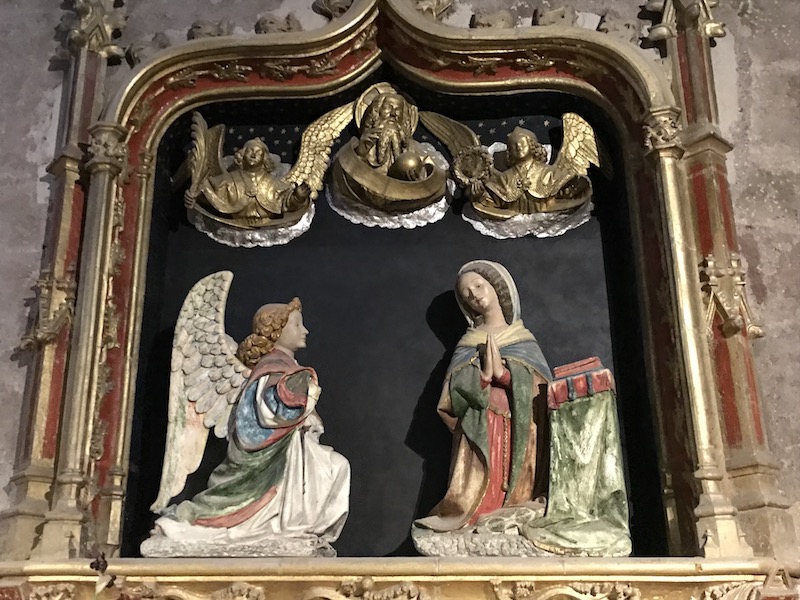
This was my favorite side chapel, the Chapel of the Holy Sepulcher. It has a sculpted set representing an entombment, dating from 1523.


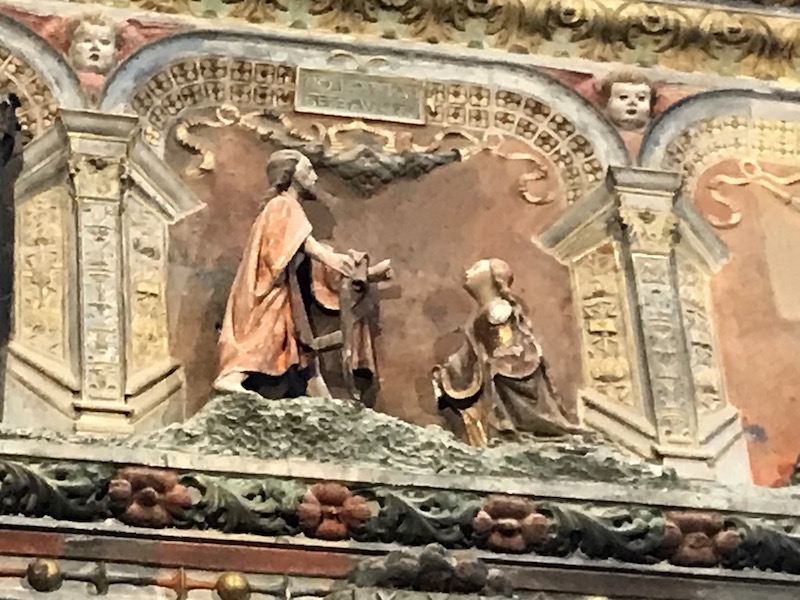
The stained-glass windows were quite interesting, and varied. There is one that shows the capture of French troops at Dunkurque in 1940 and POWs sent to work in Stalag VI C (one of the main camps). Obviously, you have the more traditional religious ones and some that are very modern.
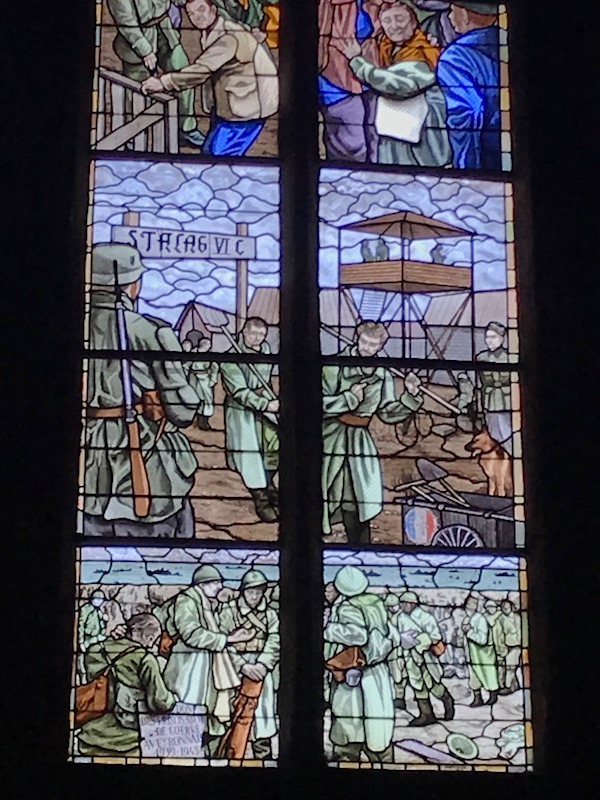


Initially built in the 12th century, the Saint-Amans Church was completely rebuilt in the middle of the 18th century. The church is dedicated to St. Amans, the first evangelist bishop of Rodez and its region. The outer façade is Baroque in style but since this is right in the middle of town, it was hard to get an adequate picture of the exterior. The baroque style dominates the outside but the interior is Neo-Romanesque in style, due to the re-use of capitals from the former building in the nave. There are 7 tapestries from the 16th century that represent the life and miracles of Saint-Amans. The large organ was made in Toulouse in 1885.


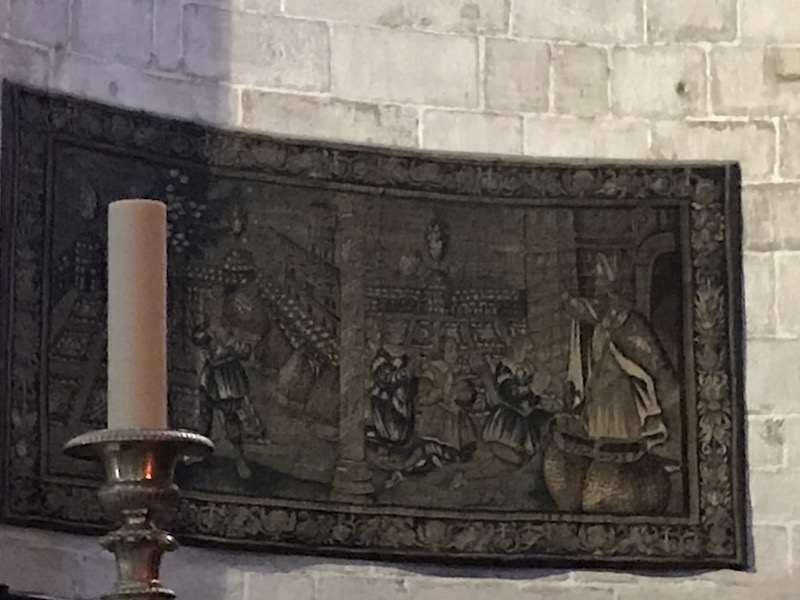

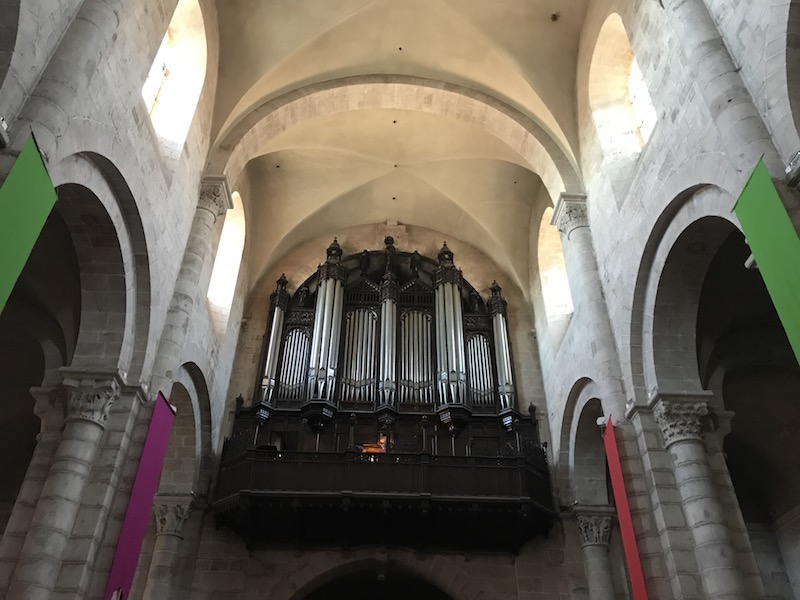
While we were there, someone was up in the organ area (see the light on) and they were playing, so we got a short video to capture the music.